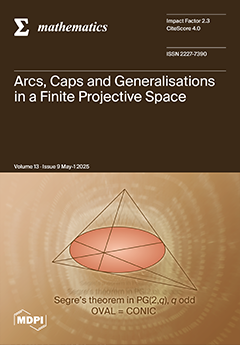Cover Story (
view full-size image):
A non-singular conic in the projective plane PG(2,
q) over the Galois field F
q, consists of q + 1 points no three of which are collinear. According to Segre, this combinatorial property characterises non-singular conics for
q odd. To establish this, Segre showed that, in the case of odd
q, any triple of points of an oval determines a pair of triangles in perspective. Generalising this idea, Segre considered sets of
k points in the
n-dimensional projective space PG(n,
q), no three of which are collinear; these sets are called
k-caps. Similarly, sets of
k points in PG(n,
q), no n + 1 of which lie in a hyperplane, are called
k-arcs. Arcs and caps can be generalised by replacing their points with
r-dimensional subspaces to obtain generalised
k-arcs and generalised
k-caps in PG(m,
q). The main focus of this paper is on generalised ovals and generalised ovoids.
View this paper





